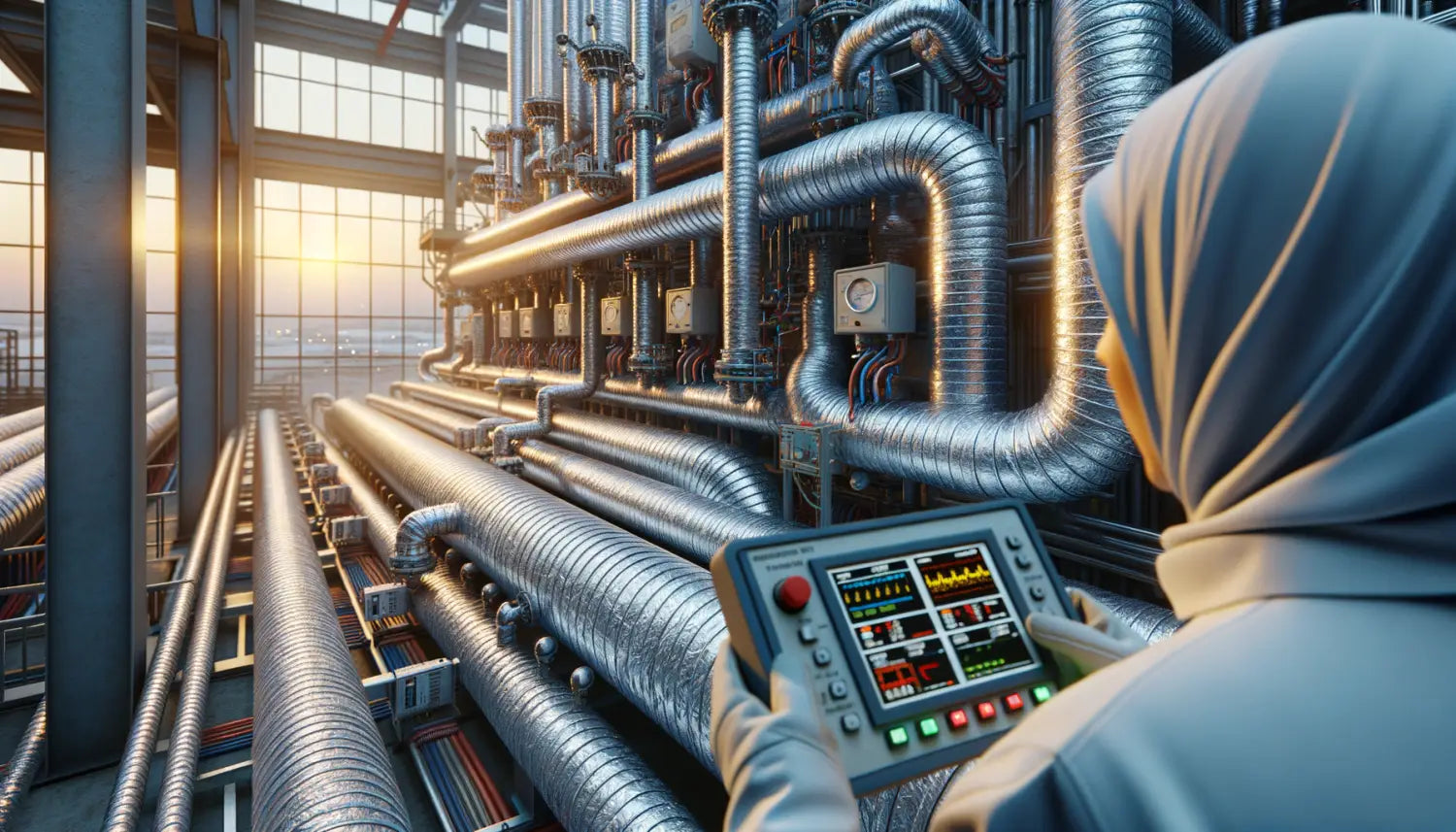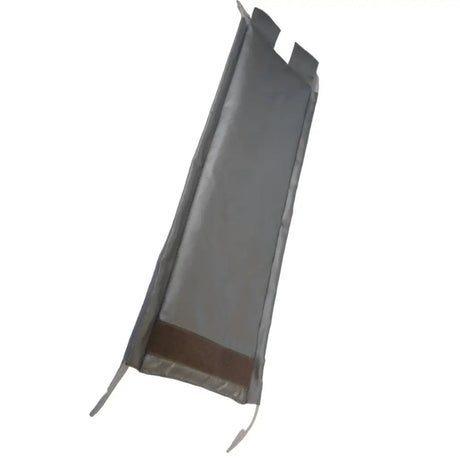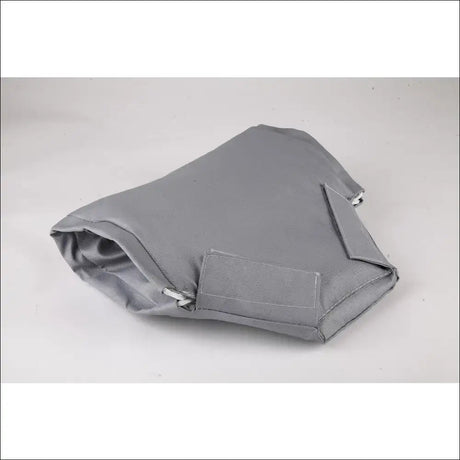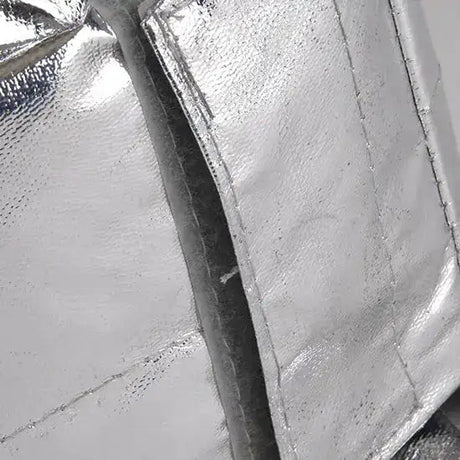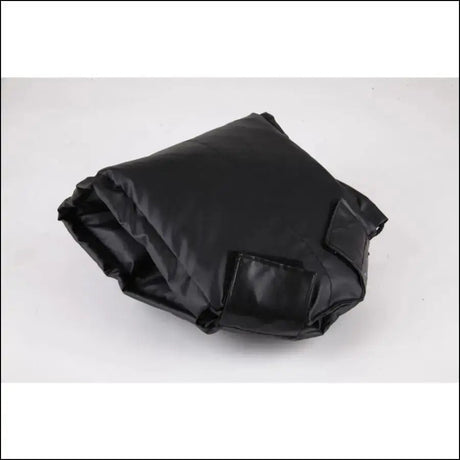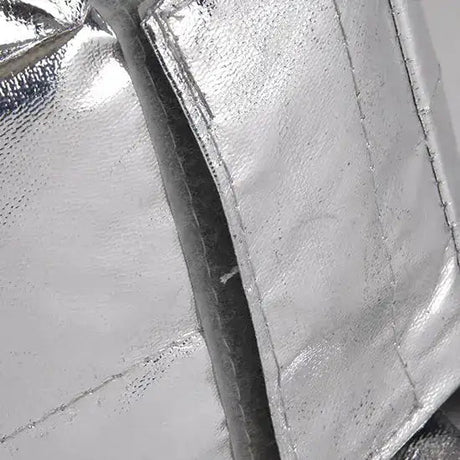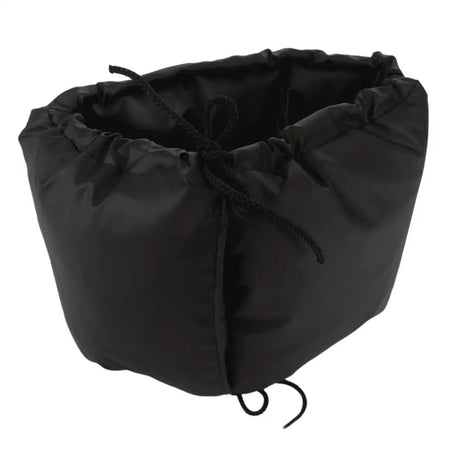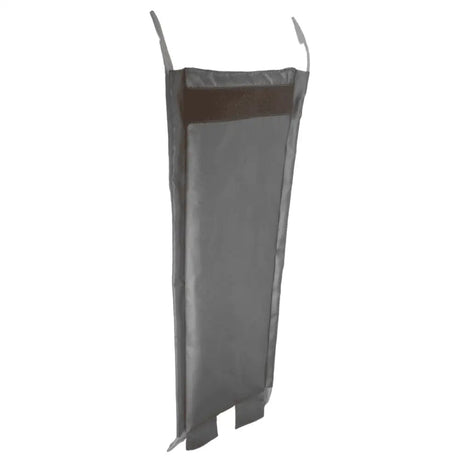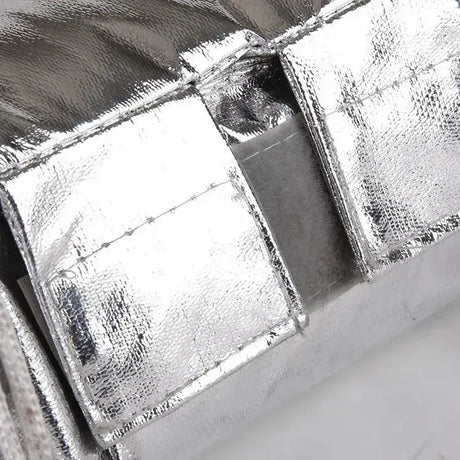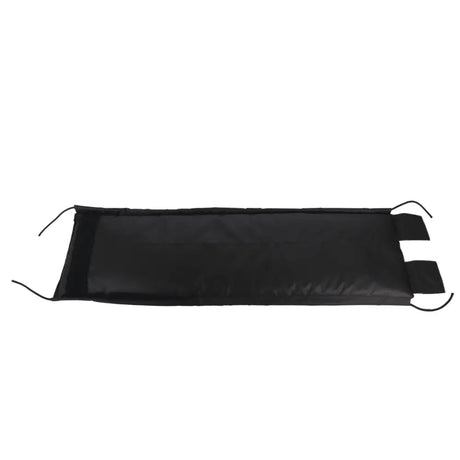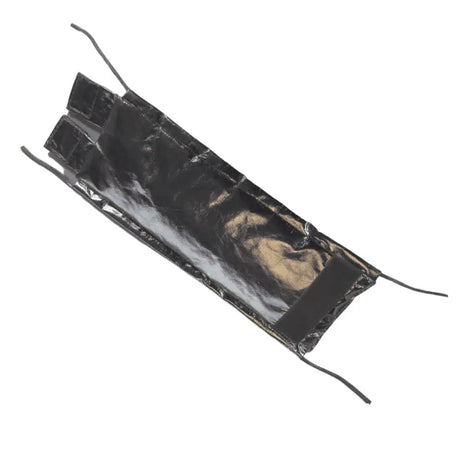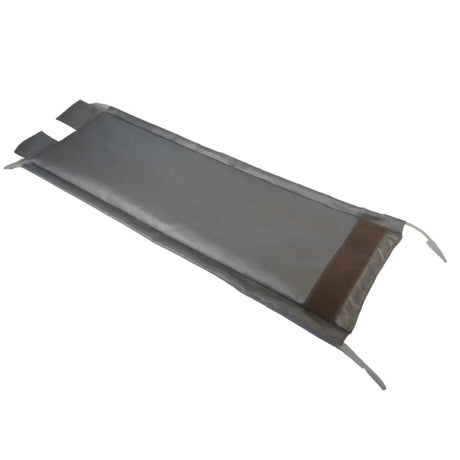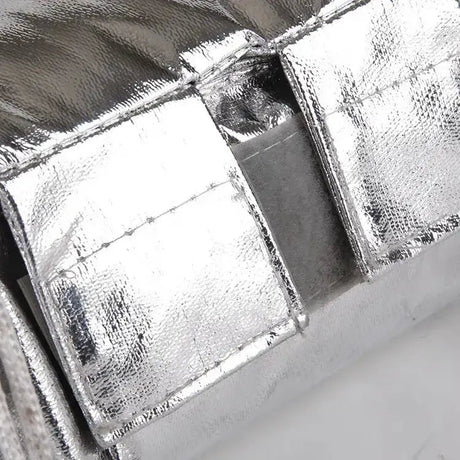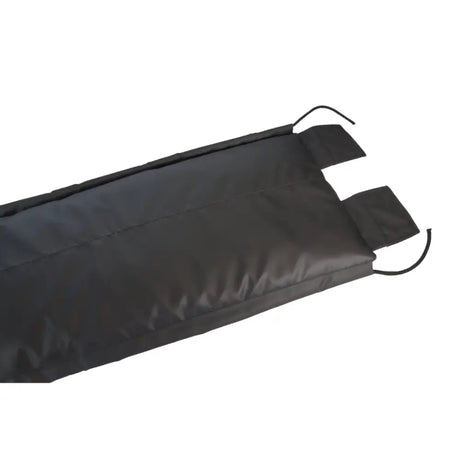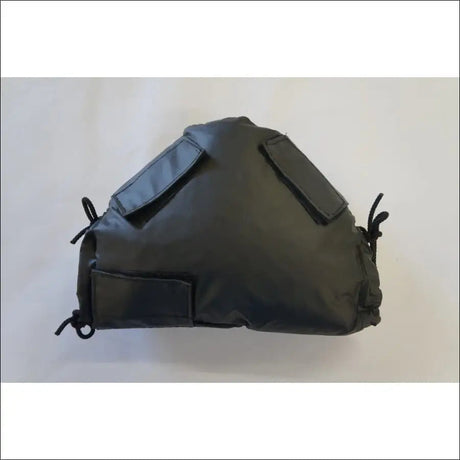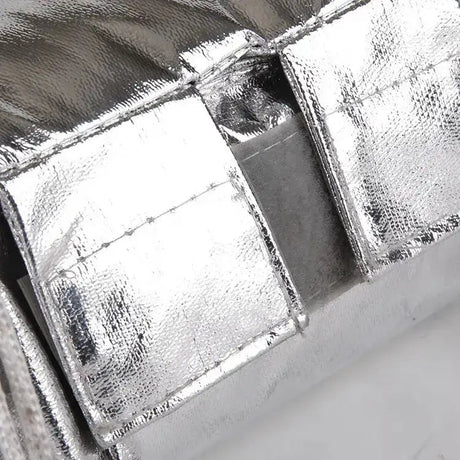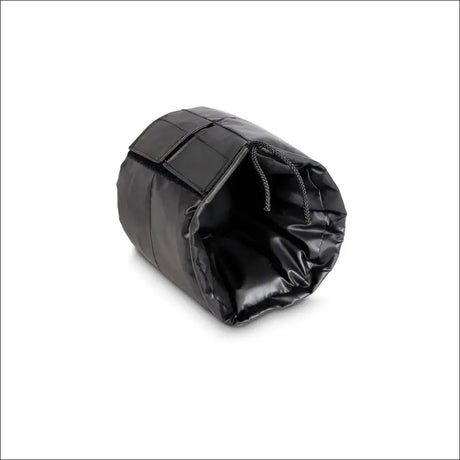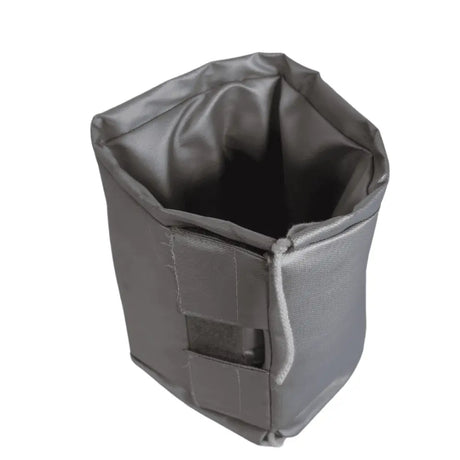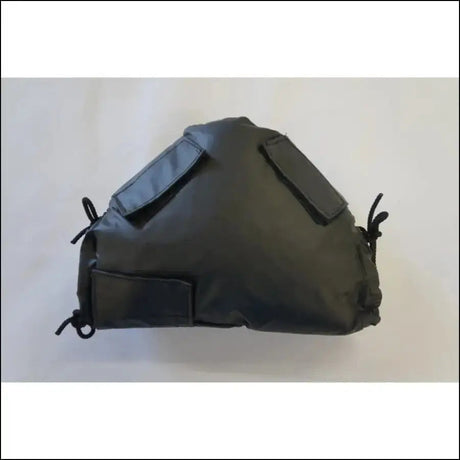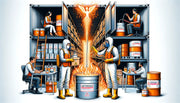In a world that is increasingly in need of reliable and efficient heating solutions, two key players have emerged as popular choices: heat trace and heat tape. These technologies, though similar in their objectives, possess distinct characteristics that set them apart. Understanding the nuances of each system is crucial when it comes to selecting the right option for a specific application, be it in industrial settings, residential contexts, or tailored sector-specific uses.
Understanding Heat Trace
Definition and Basic Principles
Heat trace, otherwise known as electric trace heating, primarily offers a safeguard against freezing and maintains the temperature of pipes, tanks, and various vessels. At its core, heat trace technology involves applying electrical heating elements or cables directly to pipes or vessels to maintain the desired temperature. This method prevents contents from freezing or ensures that viscosity is regulated in fluids that may otherwise solidify at lower temperatures. Heat trace systems leverage thermal principles to maintain or elevate temperature within controlled parameters, ensuring efficiency and preventing heat loss through appropriate insulation solutions.
Key Components of Heat Tracing Systems
Imperative to any heat tracing system are the heating elements themselves, which can come in the form of self-regulating or constant wattage cables【7†trace-heating-cables】. Self-regulating cables adjust their output based on the ambient temperature, which optimizes energy usage. Power connection kits, controllers, and monitoring systems are also integral components that afford users precision in temperature control.
Advantages of Heat Trace Technology
The robustness of heat trace makes it a preferred option for many industrial and commercial applications. Advantages include:
- Automated Temperature Control: Modern heat trace systems come equipped with thermostats and sensors that can automatically adjust power output, ensuring optimal temperature maintenance without manual intervention.
- Energy Efficiency: Coupling heat trace with high-quality insulating materials【7†trace-heating】helps minimize energy waste, translating to cost savings over time.
- Customizability: Whether it's a complex pipeline configuration or vessels of varying shapes, heat trace cables can be tailored and fitted to meet specific requirements, offering unparalleled versatility.
Common Misconceptions about Heat Trace
It's not uncommon for people to believe that heat trace systems are only for extreme cold climates. However, these systems find their utility in various environments where temperature control is necessary, extending well beyond freeze protection.
Exploring Heat Tape
What is Heat Tape and How It Works
Embracing a similar mission to keep the cold at bay, heat tape is typically an adhesive tape integrated with electrical heating capabilities. Often thinner and more flexible than heat trace cables, heat tapes are designed to be wrapped around pipes or used directly on gutters and roofs to prevent ice dam formation. They operate by converting electricity into heat, providing a steady and controllable source of warmth to the applied area.
Varieties and Types of Heat Tape
Heat tapes come in different forms, from fiberglass-reinforced tapes to tapes with integrated thermostats. Some provide constant heat, while others, akin to self-regulating heat trace cables, can adjust their heating output based on surrounding temperatures. Their diversity makes them apt for DIY projects as they can be easily applied without specialized tools or equipment, broadening their appeal to homeowners.
The Pros of Using Heat Tape
The allure of heat tape lies in its accessibility and user-friendliness. It is particularly beneficial for:
- Ease of Installation: Often requiring only an electrical socket, heat tapes can be applied without the need for complex installations.
- Flexibility: Being lightweight and versatile, heat tape is suitable for a wide range of shapes and sizes, making it ideal for residential use.
- Immediate Application: Heat tape provides quick relief from freezing temperatures, due to its straightforward application method.
Limitations and Considerations
Despite its advantages, heat tape is not without its downsides:
- Durability: It may degrade faster than heat tracing systems, necessitating more frequent inspections and potential replacements.
- Energy Consumption: Non-regulating tapes can be less energy-efficient, as they run continuously at a set output, which can lead to higher running costs.
Comparative Analysis
Heat Trace vs. Heat Tape: The Main Differences
The battle between heat trace and heat tape can be boiled down to a few key distinctions:
- Complexity and Capability: Heat trace systems tend to offer more intricate yet holistic solutions for temperature maintenance, which is a necessity for larger and more demanding applications.
- Installation and Upkeep: Heat trace installations are generally more labor-intensive and may require professional involvement, in contrast to the typically simpler heat tape applications.
- Regulation and Efficiency: The self-regulating nature of many heat trace systems promotes better energy efficiency compared to some heat tapes, which may lack these adaptive functionalities.
Performance Factors
The performance of either system is influenced by their respective construction and how well they are integrated within the required application. Heat trace is renowned for its reliable performance in industrial conditions, while heat tape is a quick fix for residential concerns, offering a straightforward solution when robust industrial-grade heating is not required.
Longevity and Durability
In terms of durability, the sophisticated composition of heat tracing systems, including their fixtures and accessories, generally allows them a longer lifespan. Heat tape might need more frequent maintenance or replacement due to its design, intended for less demanding environments.
Usage and Applications
Industrial Applications
Heat Tracing in Manufacturing
In the realm of manufacturing, maintaining specific temperatures is often critical to process efficiency and product quality. Heat trace systems are the backbone of many industrial processes including, but not limited to:
- Maintaining flow in chemical processing plants by preventing the crystallization of substances within pipes.
- Ensuring the appropriate viscosity of oils and fats in the food production industry.
- Providing freeze protection in wastewater treatment facilities where operational continuity is paramount.
Heat Tapes in Residential Settings
At the opposite end, heat tapes find their niche in managing domestic challenges, such as:
- Preventing pipes from freezing in unheated areas like attics or basements.
- Protecting vulnerable roof edges from ice dams and the ensuing water damage.
Sector-Specific Uses
Each sector demands unique solutions and adaptations of these heating systems:
Agriculture and Livestock
Ensuring adequate heating for water troughs and feed lines is essential in livestock management, and flexible heat tapes can be ideal for such tasks, given their ease of application and adaptability.
Construction and Infrastructure
Heat trace technology is pivotal in safeguarding vital infrastructures, preventing operational disruptions in cold weather. For instance, heat trace cables are used to protect against soil freezing beneath roads or around crucial foundation elements.
Technical Aspects
Installation Procedures
Step-by-Step Guide for Heat Trace
Installing a heat trace system is a structured process, which includes:
- Calculating the heating requirements based on the application.
- Selecting the appropriate type of heat tracing cables according to the needs.
- Affixing the heating elements to the pipes or vessels using specialized clamps or adhesive solutions.
- Insulating the system effectively to conserve energy and enhance performance, leveraging polyurethane insulation or vapour barriers.
DIY Installation of Heat Tape: Is It Advisable?
For heat tape, installation can be a weekend project for a homeowner:
- Measure the length of the area needing heat tape.
- Clean and prepare the surface for application.
- Apply the tape directly, ensuring there are no overlaps or insulated spots that could cause overheating.
- Plug the tape into an electrical outlet and monitor for proper operation.
Maintenance and Upkeep
Best Practices for Heat Trace Systems
Maintaining a heat trace system involves regular inspections to assess the integrity of the insulation, checking the connections and joints, and ensuring that the thermostats and control systems are functioning correctly. Having an ongoing maintenance plan in place, including seasonal checks and functionality tests, is essential for the system's longevity.
Care Tips for Heat Tape
Heat tape maintenance is less intricate but should not be overlooked. It includes checking for signs of wear and tear, ensuring that the tape remains affixed and undamaged, and verifying that the electrical components do not exhibit any signs of corrosion or failure.
Cost Implications
Initial Investment and Long-Term Value
The upfront cost of a heat trace system might be higher due to the complexities of the installation and the robustness of the technology. However, the long-term energy savings and reduced maintenance intervals may balance the scales, presenting a valuable investment. Heat tapes, on the other hand, offer a lower entry price point, which could be more suitable for small-scale or short-term applications.
Analyzing the Running Costs
The energy consumption for both systems can vary widely based on the type of product in use. Self-regulating heat trace cables are associated with reduced energy expenditure over time, while constant wattage heat tapes or non-regulating tapes might lead to higher electricity bills.
Delving into Electric Heating Solutions
Electrical Requirements for Heat Tracing and Tape
Electrical heating solutions, whether they are for heat tracing or heat tape, require a stable and compatible electrical infrastructure. Heat tracing systems, in particular, often need a dedicated circuit due to their energy demands. This can include the setup of custom trace heating boxes which house the necessary electrical connections and safety fuses. Conversely, heat tapes typically require only a standard electrical outlet, but it's crucial that the power load is correctly assessed to avoid circuit overloads.
Safety Considerations in Electric Heat Solutions
Electrical heating solutions demand rigorous adherence to safety standards. This includes avoiding over-taping and ensuring there is proper airflow to prevent overheating, using ground-fault protection devices, and employing secure fixings and accessories to prevent electrical hazards.
Specialized Heating Concerns
Pipe Heating: Ensuring Flow in Cold Climates
In colder climates, maintaining a steady flow in pipelines is essential to avoiding disruptions. Here, heat trace systems shine, as they can provide consistent heat distribution along extended lengths of piping. The use of self-regulating heat trace cables helps to combat the potential for freezing without overheating, which is essential for sensitive transported materials.
Dealing with Snow and Ice: Preventive Measures
Snow Melting Systems: Pros and Cons
Heating solutions also find applications in snow melting systems. These systems are particularly useful in areas with heavy pedestrian traffic or on driveways, where snow accumulation can pose a risk. Heat trace can provide a more permanent solution, installed beneath surfaces to prevent snow and ice buildup. However, they do come with a significant installation effort and cost.
Roof and Gutter De-icing: Strategic Use of Heat Trace and Tape
For roofs and gutters, both heat trace and heat tape can be used to prevent ice dams and icicle formations. Heat trace systems offer a more integrated solution, typically involving installation within the gutter to provide consistent heat. Heat tape, due to its flexibility, can be applied directly to problem areas on the roof itself, offering a targeted approach.
Temperature Control and Maintenance
Maintaining Critical Temperatures in Sensitive Environments
Consistent temperatures are crucial in environments such as greenhouses or pharmaceutical manufacturing where specific heat levels must be maintained. Heat trace systems, with their ability to provide a uniform temperature profile, are ideal for such sensitive applications, whilst heat tapes can serve as supplementary heat sources for smaller, more localized needs.
Innovative Thermal Management
The Role of Heat Trace in Thermal Management
Innovative thermal management systems leverage heat trace technology to protect against temperature fluctuations that can damage equipment or products. In sectors like food processing or semiconductor manufacturing, such uniformity in temperature is essential for productivity and quality control.
Heat Tape's Contributions to Thermal Regulation
Heat tape adds value to thermal regulation efforts as well, especially when a quick and nimble response is needed. Its simplicity makes it suitable for spot-application in instances where a rapid temperature adjustment is required.
The Sustainability Angle
Energy Efficiency: Which Is Better?
When considering energy efficiency, the nod typically goes to heat trace systems, thanks to their self-regulating capabilities which reduce power consumption as ambient temperatures rise. Heat tapes, especially non-regulating types, can consume more energy as they operate at a constant rate regardless of the surrounding temperature. However, for small-scale applications where the heat tape is used intermittently, this might not significantly impact the overall energy usage.
Environmental Considerations and Green Practices
Both heat trace and heat tape pose environmental considerations, particularly regarding their construction materials and life span. Selecting products that carry lesser environmental impact or greater recycle capability is crucial. Moreover, integrating systems with renewable energy sources can further enhance the sustainability quotient of these heating solutions.
Future-Proofing with Heat Tracing Systems
Technological Advances in Heat Tracing
The future of heat tracing looks bright with technological advancements that promise higher efficiency and smarter systems. Innovations in materials science lead to better performance and durability, while intelligent sensors and control units allow for real-time adjustments and predictive maintenance, further solidifying the position of heat tracing in industrial applications.
Adaptability for Evolving Industries
The adaptability of heat tracing systems ensures they keep pace with evolving industry needs, such as the expansion of renewable energy facilities and the rise of smart building technology. The scalability and flexibility of these systems mean that they can grow and evolve as required by new industrial trends.
Key Takeways
| Key Takeaways | Heat Trace | Heat Tape |
|---|---|---|
| Definition | Electrical heating system applied to pipes or vessels to maintain desired temperature | Adhesive tape with heating capabilities, ideal for wrapping around pipes or applying to gutters |
| Installation | More complex, often requires professional installation | Generally simpler, often a DIY task |
| Components | Includes cables, power connection kits, controllers, and monitoring systems | Usually just the tape itself, sometimes with integrated thermostats |
| Applications | Industrial and large-scale commercial use; sensitive environments requiring precise temperature control | Residential and small-scale commercial use; localized temperature maintenance |
| Maintenance | Requires regular professional inspections and maintenance for optimal operation | Less complex maintenance, but should still be monitored for wear and tear |
| Efficiency | Self-regulating cables are more energy-efficient, adjusting output based on temperature | Non-regulating tapes may consume more energy as they operate at a constant rate |
| Cost | Higher initial investment but potential for long-term savings due to efficiency | Lower initial cost but possibly higher long-term running costs due to constant energy use |
| Flexibility | Customizable to fit complex systems and varying requirements | Flexible and versatile for different shapes and sizes, but may not suit complex system needs |
| Safety | Must adhere to strict safety standards; requires safety devices and proper installation | Simpler safety considerations; risk of overheating if not properly installed |
| Technological Advancement | Continuously evolving with new materials and smarter control systems | Generally less tech-forward, with a focus on simple and immediate application |
| Environmental Impact | Smaller footprint with longer lifespan and integration with renewable energy sources | Greater potential impact due to shorter lifespan and constant energy consumption |
Conclusion & Final Thoughts
In this exploration of heat trace versus heat tape, we've seen the distinct advantages and applications of each. Heat trace brings a robust, customizable, and efficient heating solution, beneficial for industrial and large-scale applications, where precision and reliability are imperative. Heat tape offers a more consumer-friendly alternative, privileging ease of use and straightforwardness, suitable for residential or small-scale commercial uses.
Choosing between heat trace and heat tape comes down to understanding the specific requirements of the scenario. For industrial-grade needs and comprehensive temperature management, heat tracing systems present the optimal choice. For domestic use or when handling localized temperature control, heat tape proves to be the practical solution. With sustainability in mind, it's essential to consider energy efficiency and environmental footprint during the selection process, ensuring that the heating solution aligns with both immediate needs and long-term goals.
Heating technologies, such as heat trace and heat tape, continue to play a crucial role in maintaining operational efficiencies and protecting infrastructure from the cold. Their effective application and maintenance demand discernment and a strategic approach, looking beyond initial costs to long-term value and performance. Whether for complex thermal management in industry or simple pipe protection in a home setting, these systems offer tailored solutions that keep the cold at bay and ensure that warmth and safety are maintained.

